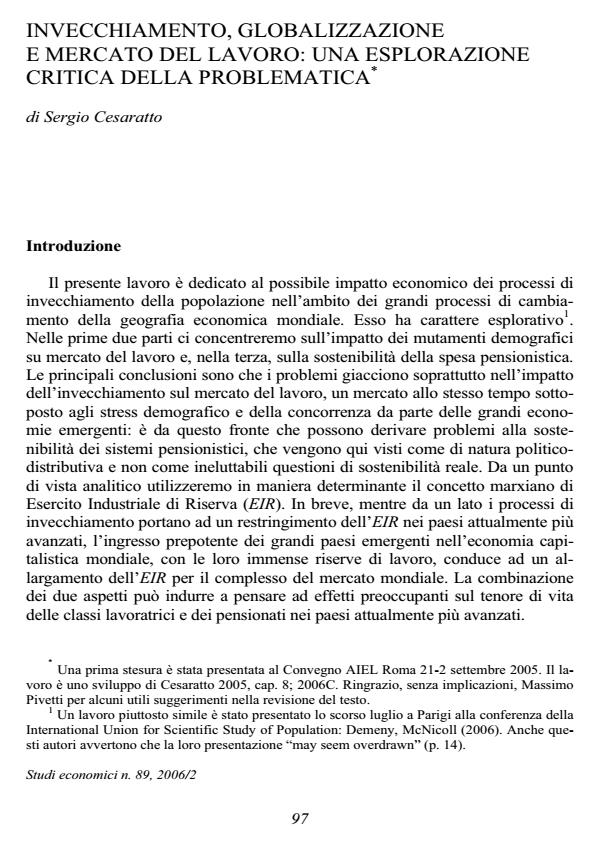Invecchiamento, globalizzazione e mercato del lavoro: una esplorazione critica della problematica
Titolo Rivista STUDI ECONOMICI
Autori/Curatori Sergio Cesaratto
Anno di pubblicazione 2007 Fascicolo 2006/89 Lingua Italiano
Numero pagine 37 P. 97-133 Dimensione file 160 KB
DOI
Il DOI è il codice a barre della proprietà intellettuale: per saperne di più
clicca qui
Qui sotto puoi vedere in anteprima la prima pagina di questo articolo.
Se questo articolo ti interessa, lo puoi acquistare (e scaricare in formato pdf) seguendo le facili indicazioni per acquistare il download credit. Acquista Download Credits per scaricare questo Articolo in formato PDF

FrancoAngeli è membro della Publishers International Linking Association, Inc (PILA)associazione indipendente e non profit per facilitare (attraverso i servizi tecnologici implementati da CrossRef.org) l’accesso degli studiosi ai contenuti digitali nelle pubblicazioni professionali e scientifiche
The paper deals with the economic impact of the process of population ageing which is taking place in most of the developed world. It focuses on the impact of this process on the labour market and on the sustainability of pension spending. The demographic developments are occurring simultaneously to the great changes brought about by the process of globalisation. The labour market is affected by both. Using the concept of Industrial Reserve Army (IRA), it is argued that the demographic changes lead to a contraction of the IRA on the one hand, while on the other hand the entrance of the big Asian economies into the world market with their immense labour reserves, leads to an enlargement of the IRA. This might result in weakening the bargaining power of the working class in the developed world. It is finally argued that the viability of public pension systems is mainly a question of income distribution and not of lack of real resources.;
Sergio Cesaratto, Invecchiamento, globalizzazione e mercato del lavoro: una esplorazione critica della problematica in "STUDI ECONOMICI " 89/2006, pp 97-133, DOI: